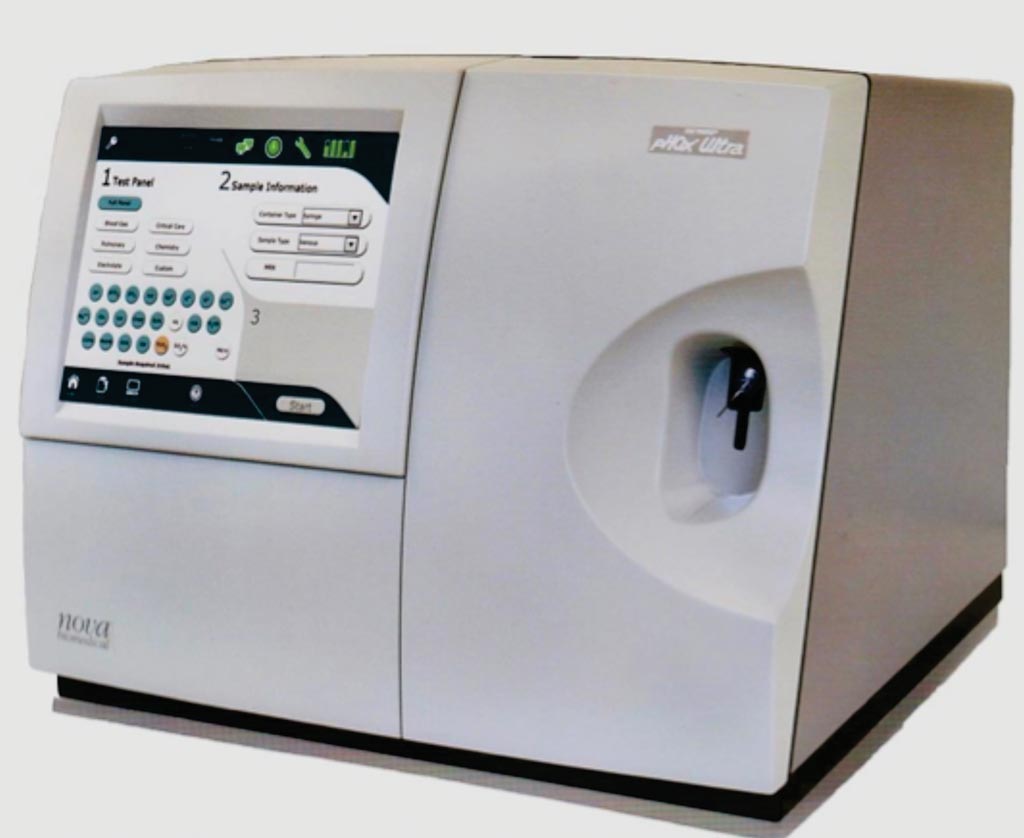Analysis Compared for Accurate Pleural Fluid pH Determination
By LabMedica International staff writers
Posted on 12 Mar 2019
Pleural effusion is the pathological accumulation of pleural fluid resulting from excess fluid production and/or increased transpleural pressure, increased capillary permeability, and impaired lymphatic drainage.Posted on 12 Mar 2019
Pleural effusion occurs in many pulmonary or systemic diseases such as infection, liver cirrhosis, congestive heart failure, and malignancy. For assessment and differential diagnosis of the cause of pleural effusion, pleural fluid pH is one of the most useful indicators, along with the widely recommended indicators such as total protein, lactate dehydrogenase, and glucose levels.

Image: The pHOx Ultra blood gas analyzer is used for routine blood gas analysis (Photo courtesy of Nova Biomedical).
Medical Laboratory Scientists at the Yonsei University College of Medicine (Seoul, Republic of Korea) evaluated from in- and out-patient samples obtained from thoracentesis or pigtail catheter drainage and submitted to the laboratory for routine body fluid analysis. The Clot Catcher, a disposable and single-use device designed to filter off microclots or debris, was inserted between the syringe and the blood gas analyzer.
The i-STAT G3+, a cartridge-based blood gas analyzer, was used as a reference analyzer for comparison with the other three methods. The i-Smart 300, a recently introduced cartridge-based blood gas analyzer, was evaluated for comparison. The Nova Biomedical pHOx Ultra now in use for routine arterial blood gas analysis in their laboratory, and pH indicator paper was also compared.
The scientists reported that the within-device precision of all three blood gas analyzers was acceptable within 0.1% according to the desirable precision criteria. For the i-STAT G3+, within-device CV(%) at low (pH 7.04) and high levels (pH 7.76) was 0.05% and 0.04%, respectively. For the pHOx Ultra, total CV(%) was 0.03% for all levels (pH 7.13, 7.35, and 7.59). For the i-Smart 300, total CV(%) at low, mid, and high levels (pH 7.13, 7.36 and 7.59, respectively) was 0.09%, 0.08%, and 0.09%, respectively.
The i-Smart 300 showed good agreement with i-STAT G3+, with a slope of 0.85 (95% CI, 0.800–0.906). The pHOx Ultra showed about 30% lower pH values than the i-STAT G3+. The slope of equation for pH indicator paper was 1.105, with a relatively wide range of 95% CI (0.781−1.581).
The authors concluded that pleural fluid pH determination using both blood gas analyzers, the i-Smart 300 and pHOx Ultra, is sufficiently accurate for diagnosing complicated parapneumonic effusion (CPPE), if pleural fluid is collected anaerobically in a heparinized syringe and a Clot Catcher is used to protect blood gas analyzers. The study was published on January 29, 2019, in the journal Practical Laboratory Medicine.
Related Links:
Yonsei University College of Medicine













